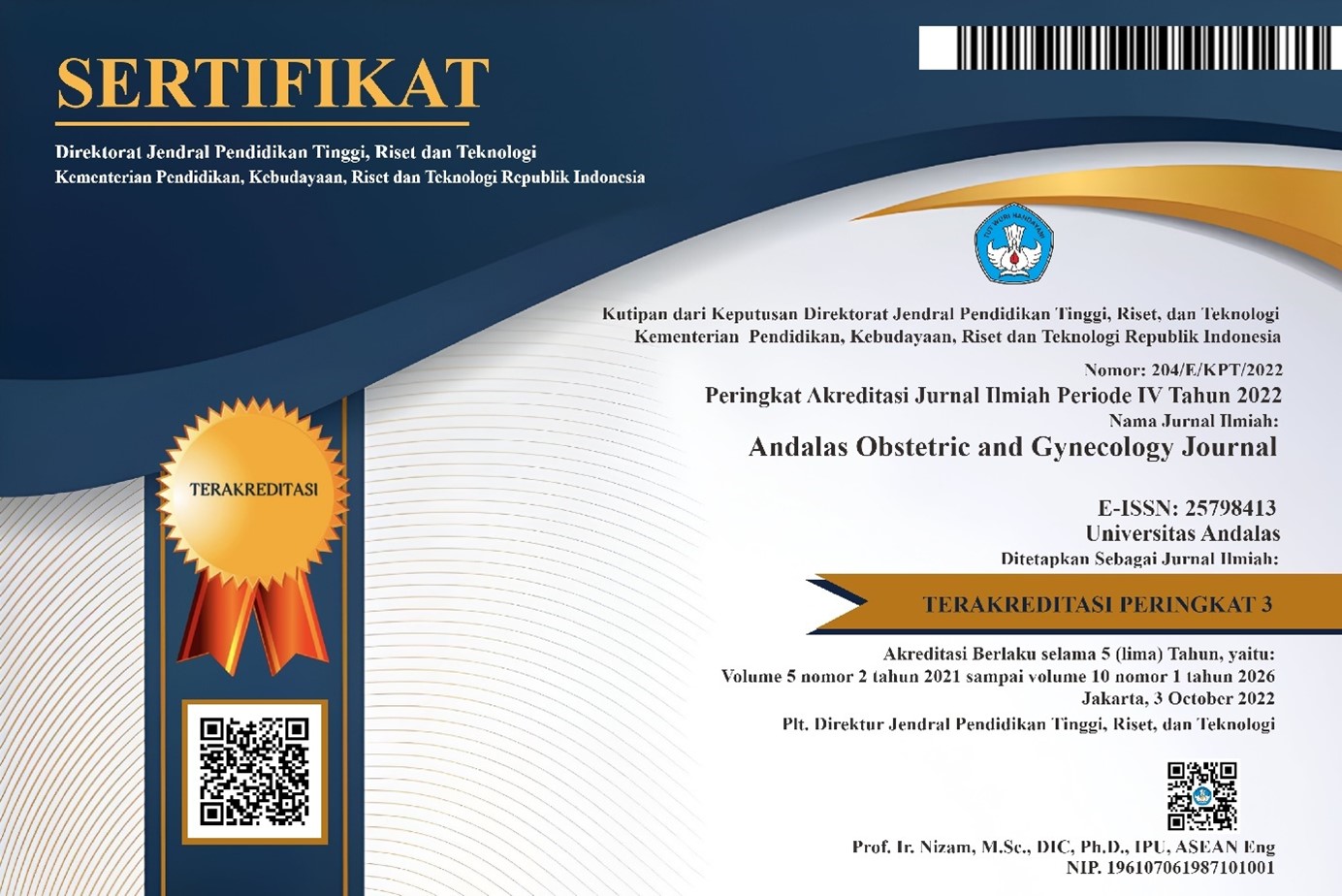Collaborative Intervention Assistance Model In An Effort To Increase The Quality Of Pregnant Women Services To Reduce Maternal Mortality In Padang City
DOI:
https://doi.org/10.25077/aoj.8.2.667-674.2024Keywords:
pregnancy, number of deaths, service qualityAbstract
Background : Maternal death, as defined by WHO, includes deaths during pregnancy or within 42 days postpartum due to pregnancy-related causes. The Maternal Mortality Rate (MMR) quantifies maternal deaths per 100,000 live births. A key target of the Millennium Development Goals (MDGs) was reducing the MMR by three-quarters between 1990 and 2015, aiming for a global rate under 70 per 100,000 by 2030. In Indonesia, the 2012 Demographic and Health Survey reported an MMR of 359 per 100,000 live births, with West Sumatra at 212 per 100,000.
Objective : This study employs a mixed-method approach, focusing on pregnant women visiting health centers in Padang City, to assess an intervention model.
Result : Maternal mortality in Indonesia is mainly caused by bleeding, eclampsia, and infections, with contributing factors including delayed care access, socio-cultural, educational, and economic challenges. Significant health issues include hypertensive disorders, diabetes, acute kidney injury, jaundice, and thyroid disease. Low educational and economic levels in rural areas correlate with higher maternal morbidity and mortality. Government efforts, such as the Maternity Guarantee (Jampersal) and the Maternal and Child Health (KIA) Handbook, aim to improve maternal health but face challenges due to poor resource utilization.
Conclusion : Indonesia struggles to meet maternal mortality reduction targets, with rates high compared to other Asian countries. Effective interventions must address both direct and indirect causes of maternal deaths, improve education and economic conditions, and enhance healthcare access. Government programs show promise but require better implementation and community engagement to reduce maternal mortality rates effectively.
Downloads
Published
Issue
Section
License
Copyright (c) 2024 Syahredi Adnani, Rizanda Machmud, Dwiana Ocviyanti

This work is licensed under a Creative Commons Attribution 4.0 International License.
Copyright
Authors who publish with this journal agree to the following terms:
- Authors retain the copyright of published articles and grant the journal right of first publication with the work simultaneously licensed under a Creative Commons Attribution 4.0 International License that allows others to share the work with an acknowledgment of the work's authorship and initial publication in this journal.
- Authors are able to enter into separate, additional contractual arrangements for the non-exclusive distribution of the journal's published version of the work (e.g., post it to an institutional repository or publish it in a book), with an acknowledgment of its initial publication in this journal.
- Authors are permitted and encouraged to post their work online (e.g., in institutional repositories or on their website) prior to and during the submission process, as it can lead to productive exchanges, as well as earlier and greater citation of published work (See The Effect of Open Access).
License:
Andalas Obstetrics and Gynecology Journal (AOJ) is published under the terms of the Creative Commons Attribution 4.0 International License. This license permits anyone to copy and redistribute this material in any form or format, compose, modify, and make derivatives of this material for any purpose, including commercial purposes, as long as they credit the author for the original work.







